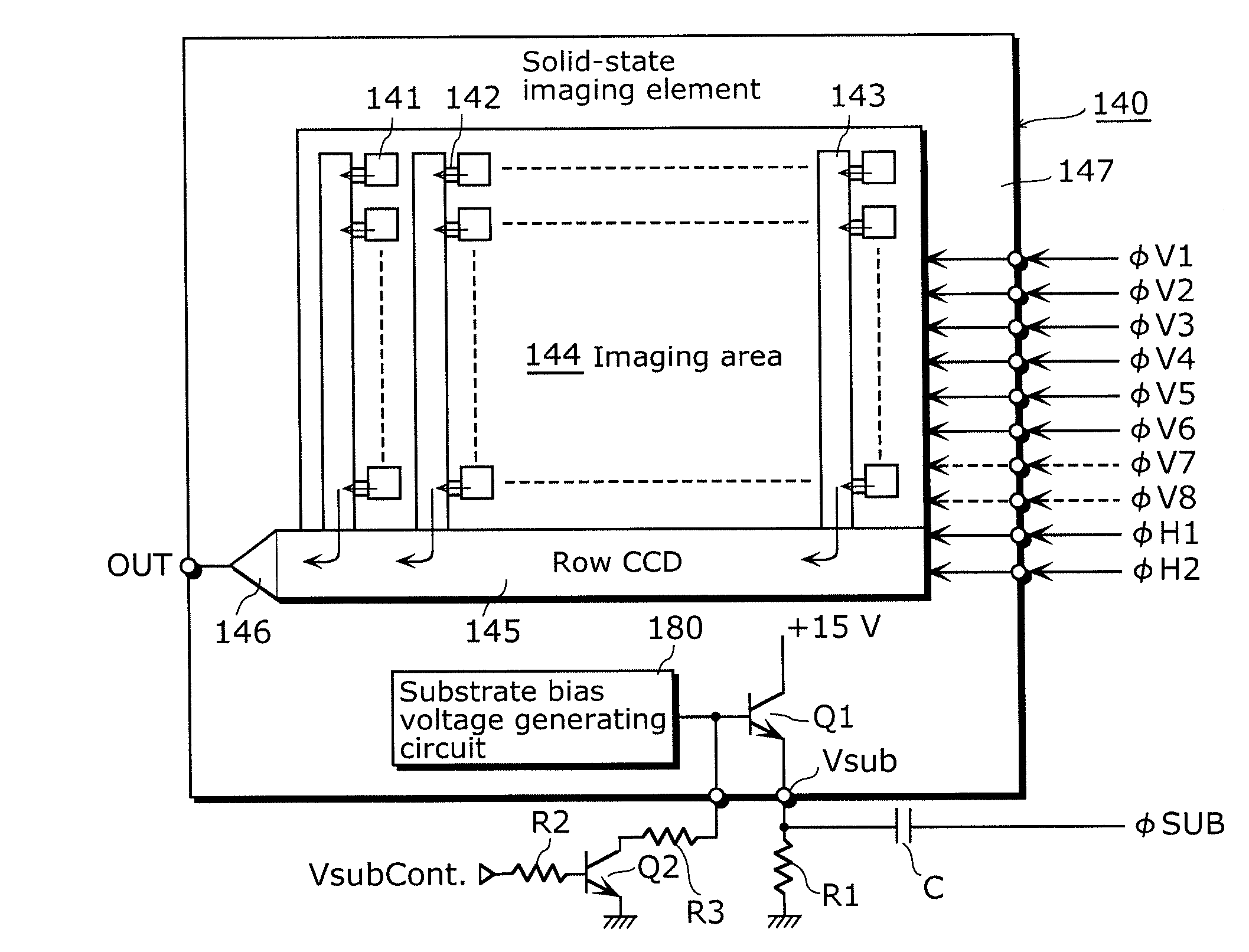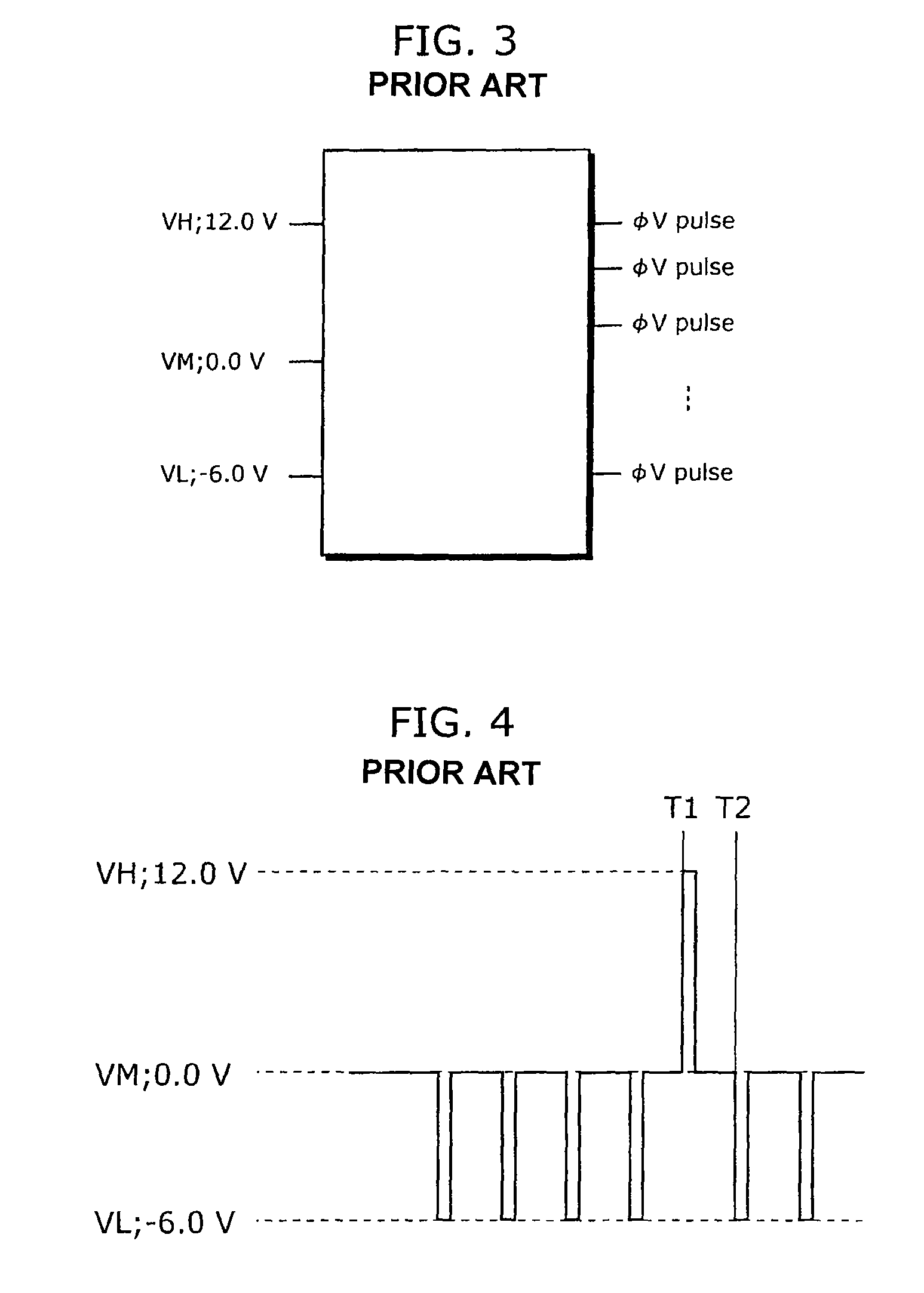Solid-state imaging device, driving method thereof, and camera
a solid-state imaging and driving method technology, applied in the direction of color television details, radio control devices, television systems, etc., can solve the problems of insufficient potential barrier between the photodiodes, the gate portion of the well near the read-out gate becomes difficult to control, and the miniaturization fails to keep the distance, so as to facilitate the read-out operation of signal charge, the effect of reducing the occurrence of blooming and maximizing the dynamic range of the photodiod
- Summary
- Abstract
- Description
- Claims
- Application Information
AI Technical Summary
Benefits of technology
Problems solved by technology
Method used
Image
Examples
first embodiment
[0096]FIG. 5 shows a structure of a camera (imaging device) using a solid-state imaging device in a first embodiment.
[0097]As shown in FIG. 5, a camera 101 includes: a lens 110 forming an optical image of an object on a solid-state imaging element; an optical system 120, such as a mechanical shutter and a mirror optically processing the optical images passing through the lens 110; a solid-state imaging device 130 in the present invention; a signal processing unit 160; and a digital signal processor (referred also to as “DSP”, hereinafter) 170.
[0098]The solid-state imaging device 130 includes a solid-state imaging element 140 and a driving pulse controlling unit 150.
[0099]The solid-state imaging element 140, such as an CCD image sensor, generates a pixel signal in accordance with an amount of received light.
[0100]Following a direction from the DSP 170, the driving pulse controlling unit 150 controls the solid-state imaging element 140 by generating various driving pulses at various s...
second embodiment
[0138]FIG. 12 shows a structure of a camera (imaging apparatus) 201 in a second embodiment.
[0139]The camera 201 in the embodiment is different from the camera 101 in the first embodiment in that the camera 201 includes a driving pulse controlling unit 250 which has a different structure from the driving pulse controlling unit 150 in the first embodiment. The driving pulse controlling unit 250 includes a driving pulse generating unit 252 and a pulse shifting unit 253. The pulse shifting unit 253 has a circuit part which is shared with the solid-state imaging element 140.
[0140]FIGS. 13A and 13B illustrate a structure of the driving pulse controlling unit 250. It is noted that FIG. 13B only shows a structure to generate a column transfer clock φV1 in FIG. 13A. This structure is similar to a structure to generate column transfer clocks φV2 to φV6.
[0141]The driving pulse controlling unit 250 has no −1 V power supply, and thus has a similar structure to a power source of the driving pulse...
third embodiment
[0156]FIG. 17 is a cross-sectional view of a solid-state imaging element 340 in a third embodiment. In particular, FIG. 17 is a cross-sectional view showing a structure of the photodiode 341 and the column CCD 143 in a substrate in-depth direction.
[0157]The solid-state imaging element 340 in the embodiment is different from the solid-state imaging element 140 in the first embodiment in that the solid-state imaging element 340 includes a photodiode 341 having a different cross-sectional structure from that of the photodiode 141 in the first embodiment. The photodiodes 341 is structured to have the signal charge accumulating region 192 and a hole storage region 393. The signal charge accumulating region 192 and the hole storage region 393 are located beside the charge transfer region 195. A side portion, of the hole storage region 393, facing to the charge transfer region 195 recedes in a direction away from the charge transfer region 195 with respect to a side portion, of the signal ...
PUM
 Login to View More
Login to View More Abstract
Description
Claims
Application Information
 Login to View More
Login to View More - R&D
- Intellectual Property
- Life Sciences
- Materials
- Tech Scout
- Unparalleled Data Quality
- Higher Quality Content
- 60% Fewer Hallucinations
Browse by: Latest US Patents, China's latest patents, Technical Efficacy Thesaurus, Application Domain, Technology Topic, Popular Technical Reports.
© 2025 PatSnap. All rights reserved.Legal|Privacy policy|Modern Slavery Act Transparency Statement|Sitemap|About US| Contact US: help@patsnap.com



